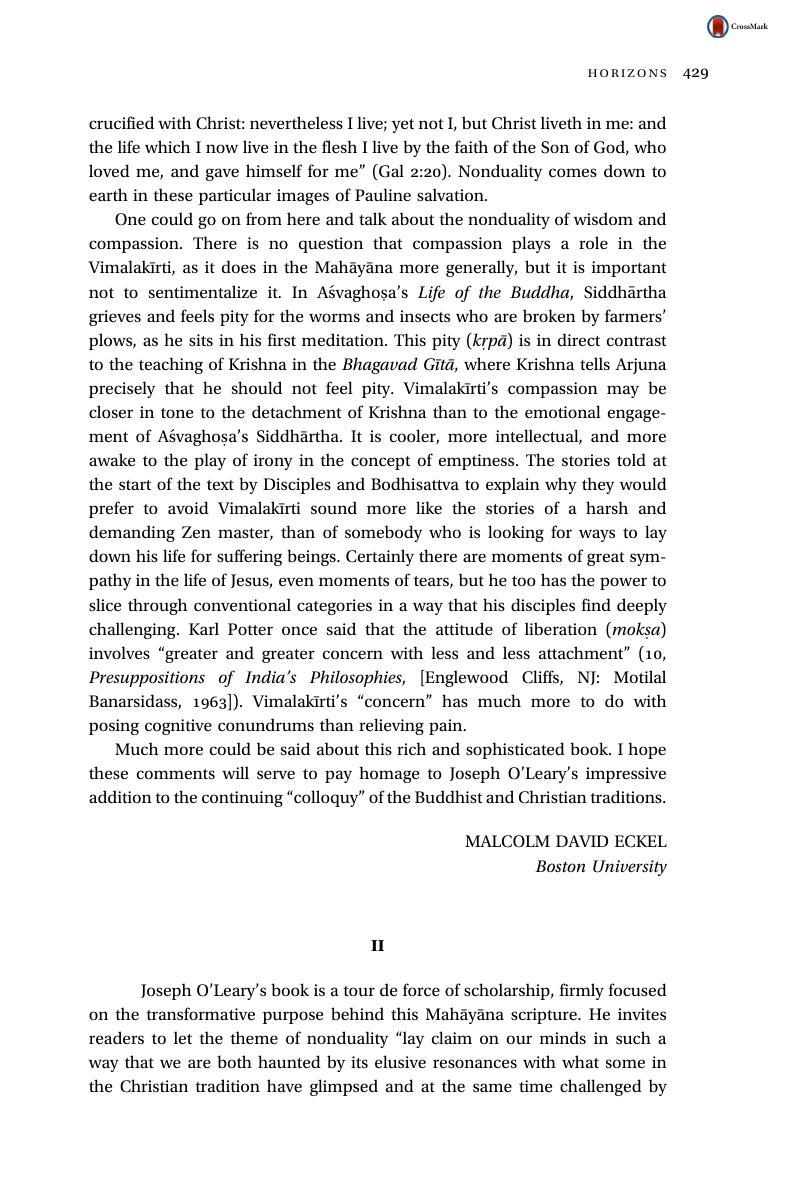No CrossRef data available.
Published online by Cambridge University Press: 07 November 2017

1 These ideas are developed more fully in a manuscript in process, tentatively entitled “Crucified Wisdom: The Bodhisattva Path and the Way of the Cross.”
2 Loy, David, Nonduality: A Study in Comparative Philosophy (New Haven, CT: Yale University Press, 1988), 17Google Scholar.
3 This initial move is common to Theravada and Mahāyāna traditions, and only in Yogacara or “mind only” traditions might it seem to be revoked in favor of a more primordial “idealism.”
4 I draw here on Nagao, Gadjin, The Foundational Standpoint of Mahyamika Philosophy, ed. Inada, Kenneth, trans. Keenan, John P., SUNY Series in Buddhist Studies (Albany: State University of New York Press, 1989)Google Scholar.
5 For the purposes of this argument, this could as well be a state of penultimate meditative attainment or a modest mystical religious experience.
6 Athanasius and Behr, John, On the Incarnation, Popular Patristics Series (Yonkers, NY: St. Vladimir's Seminary Press, 2011)Google Scholar.
7 Barth, Karl, Church Dogmatics, ed. Bromiley, Geoffrey William, trans. Torrance, Thomas F., vol. 3, pt. 2 (London and New York: T & T Clark International, 2004), 345Google Scholar.
8 Ibid. Indeed, it is this very note in Barth that encouraged Thomas Merton on his path into dialogue with Buddhism. Merton wrote in his journal, “The great joke is this: having a self that is to be taken seriously, that is to be proved, free, right, logical, consistent, beautiful, successful and in a word ‘not absurd.’” Merton, Thomas, Conjectures of a Guilty Bystander (Garden City, NY: Doubleday, 1966), 247–48Google Scholar.
9 God appears an obvious instance of svabhāva existence. There is no space here to explore the ways in which a Trinitarian God, a coinherent communion, can also be understood as resistant to that characterization. This is yet another of the kind of comparative exercises that O'Leary explores, one already begun, for instance, in Corless, Roger and Knitter, Paul F., Buddhist Emptiness and Christian Trinity: Essays and Explorations (New York: Paulist Press, 1990)Google Scholar.
10 We can see why the Dalai Lama frequently suggests that the most difficult lesson to learn, particularly in Madhyamaka, is the true significance of conventional truth. Once one has a vivid sense of no-self, one may be tempted not to credit the deliverances of such a self on any level.